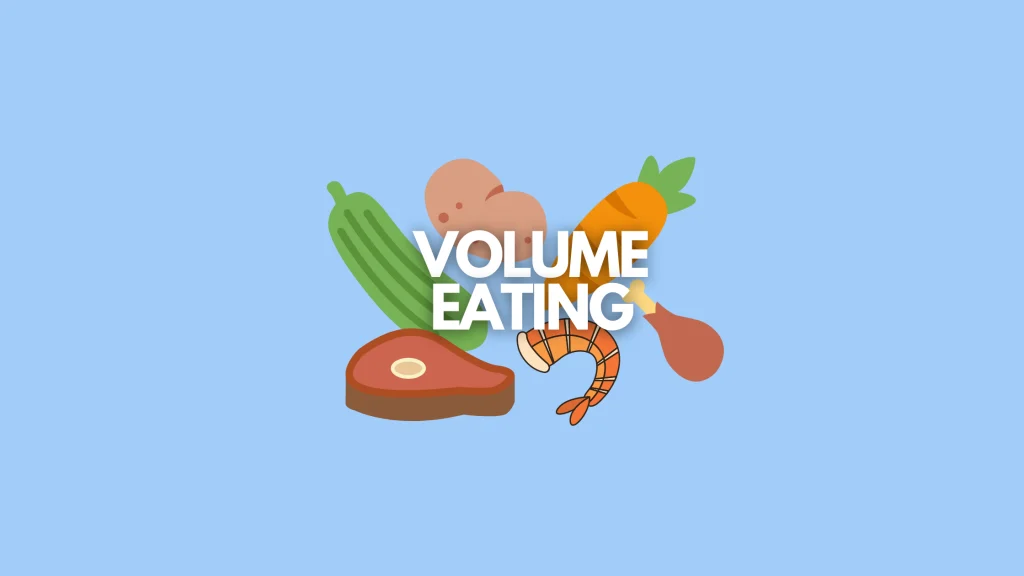Eating more and weighing less…sounds too good to be true right? Well, not necessarily. In this article, I am going to show you exactly how I’ve helped hundreds of everyday ordinary people like yourself, lose weight and improve their relationship with food. One of the most useful strategies I use with clients is called volume eating.
In this post, I am going to break down exactly what volume eating is and go over the benefits. Lastly, I am going to throw in some bonus tips on how to make your recipes higher in volume and give you some examples of what a full day of high-volume eating looks like.
Whether you are looking to get in more quality nutrition, or just slim down for summer, read on for everything you need to know about volume eating for weight loss!
Volume Eating: How To Eat More And Weigh Less
Before we get started, it’s crucial that you understand how many calories your body needs.
It’s important to eat foods that are high in volume, but if you are not losing weight, chances are you are simply eating too many calories.
In order to figure out how many calories you should be eating for weight loss, check out my free calorie calculator.
What is Volume Eating?
Volume eating is all about creating a calorie deficit using the foods that take up the most room in your stomach for the least amount of calories.
In order for us to lose weight successfully, we want to be minimizing feelings of hunger. We also don’t want to feel like we are depriving ourselves of foods we love.
Having hunger pangs in a calorie deficit is inevitable, but we can definitely minimize it. One way that we do this is to make sure we are eating foods that fill us up with fewer calories.
For example, a cup of spinach is 5 calories. A cup of pretzels is 250 calories. For the same amount of calories as one cup of pretzels, we could eat 50 cups of spinach. (Please don’t try that.)
Does that mean we should never eat pretzels? No. I still want you to eat pretzels. Pretzels are delicious. It does mean, however, that if we are in a calorie deficit, we should be maximizing high volume foods and minimizing low volume foods.
Volume Eating: How To Eat More And Weigh Less
High Volume Foods Vs. Low Volume Foods
What makes a food higher in volume?
A common theme you will see with low calorie-dense foods is that they are minimally processed, high in fiber, high in micronutrients, and low in dietary fat.
Dietary fat is 9 calories per gram. Carbs and protein, however, are only 4 calories per gram. Fat is still important and essential for health, so don’t cut fats too low, but we want to prioritize food that’s are high in volume here.
Most high-volume foods are going to fall into 2 categories—carbs or proteins. In this section, I am going to give you a list of high-volume foods for both carbohydrates and protein.
Carbs
The most voluminous (fun word) carb sources are going to come from fruits and vegetables. Just to illustrate how much of these foods you can eat for so few calories, I will only be including foods that you can eat a POUND of for less than 250 calories on my list.
10 High-Volume Fruits
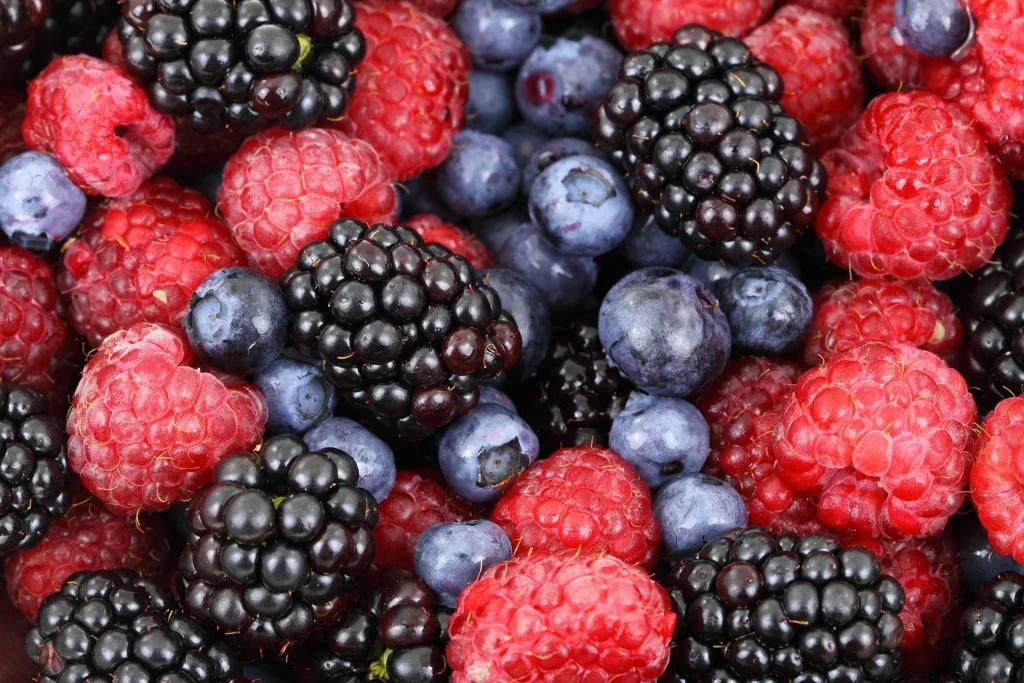
- Watermelon: 136 calories per pound
- Grapefruit: 145 calories per pound
- Strawberries: 145 calories per pound
- Cantaloupe: 154 calories per pound
- Honeydew Melon: 163 calories per pound
- Peaches: 177 calories per pound
- Blackberries: 195 calories per pound
- Oranges: 213 calories per pound
- Raspberries: 236 calories per pound
- Apples: 236 calories per pound
20 High-Volume Vegetables
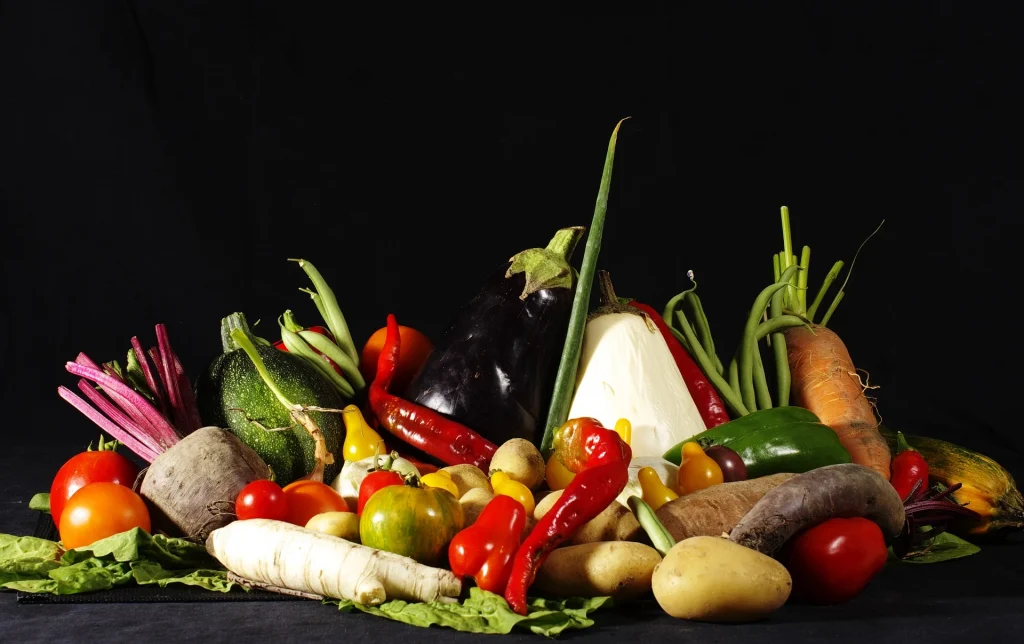
- Celery: 63 calories per pound
- Cucumber: 68 calories per pound
- Radish: 73 calories per pound
- Romaine Lettuce: 77 calories per pound
- Zucchini: 77 calories per pound
- Yellow Squash: 82 calories per pound
- Tomato: 82 calories per pound
- Asparagus: 91 calories per pound
- Mushrooms: 100 calories per pound
- Spinach: 104 calories per pound
- Eggplant: 109 calories per pound
- Arugula: 113 calories per pound
- Bell Pepper: 118 calories per pound
- Cabbage: 109 calories per pound
- Butternut squash: 140 calories per pound
- Green beans: 140 calories per pound
- Broccoli: 154 calories per pound
- White onion: 190 calories per pound
- Brussel Sprouts: 195 calories per pound
- Tomato: 82 calories per pound
6 High-Volume Protein Sources

Eating a high-protein diet is especially important if you want to lose weight. Getting enough protein is important and for the sake of keeping things high-volume and low-calorie, I have included some of the best protein sources to include in your diet for volume eating.
In this section, I am going to tell you how many calories 50g of protein would be for each protein source.
- Egg Whites: 236 calories for 50g of protein
- Nonfat Greek Yogurt: 250 calories for 50g of protein
- Fat-Free Cottage Cheese: 280 calories for 50g of protein
- 99% Lean Ground Turkey: 216 calories for 50g of protein
- Boneless Skinless Chicken Breast: 237 calories for 50g of protein
- Shrimp: 264 calories for 50g of protein
Volume Eating: How To Eat More And Weigh Less
Benefits Of Volume Eating
#1 Psychologically
Whenever I have clients who are struggling with feeling hungry all of the time, I have a look at their food diaries.
What I usually find is that they just aren’t eating enough high-volume foods.
Not only are there obvious health benefits to eating more fiber and micronutrients found in dark leafy greens, cruciferous vegetables, and different varieties of plants…but they just simply make your meals bigger.
It’s hard to feel deprived when you are eating gigantic plates of food.
I’ll get more into how to specifically make your recipes higher in volume a little later in this post, but for now, just know that having massive salad bowls the size of your head helps when in a deficit.
Whenever I am taking a client through a fat loss phase, I have them make a BAS (big ass salad). This salad can literally be anything they like, but it must have tons of veggies, and lots of protein.
This usually takes care of their hunger pangs for several hours due to the sheer volume of the meal.
Research also shows that the more volume we have in particular meals, the less likely we are to finish those same meals (1). So bulking up your pasta, stir fry, and salads with veggies is a great way to make sure you don’t eat past the point of fullness.
#2 May Reduce Binge Eating
In this study conducted in 2009, 15 women with binge eating disorders and 15 women without BED were given a lower volume 171 calorie snack before going to a buffet-style lunch. Then, on consecutive days, they were given a high-volume 171-calorie snack and allowed to eat whatever they want from the buffet again.
What the researchers found was that on the days the women with binge eating disorders were given the high-volume snack, they had less excitement about food, they ate less, and were less likely to get dessert.
This is exciting research because it actually shows that more consistent feedings of high-volume meals and snacks may help reduce and possibly even eliminate over-eating altogether.
Obviously, more research needs to be done here, but anecdotally, I have found similar results with my clients who have a history of over-eating. When we started to incorporate one big salad per day, most of them had less binging and issues with nighttime snacking.
#3 Helps With Weight Loss
Managing your calorie intake can be tough. Especially if you are getting most of your calories from low-volume foods.
This is why volume-eating can help so much with weight loss. Simply because you are eating larger portions of food. You will have less room in your stomach and you will feel less need to overeat.
Most of the clients that I work with track their calories. However, it is not a requirement. If I have a client who wants to stop tracking, I simply have them start to eat more high-volume meals throughout the day. Most of the time this will lead that person to eat in a calorie deficit even without tracking their nutrition.
Whether you are tracking calories or not, volume eating can still be a helpful tool to have in your arsenal.
The more fruits, vegetables, and lean proteins you can add to your dishes, the more full you are going to feel.
#4 Increased Fiber and Micronutrients
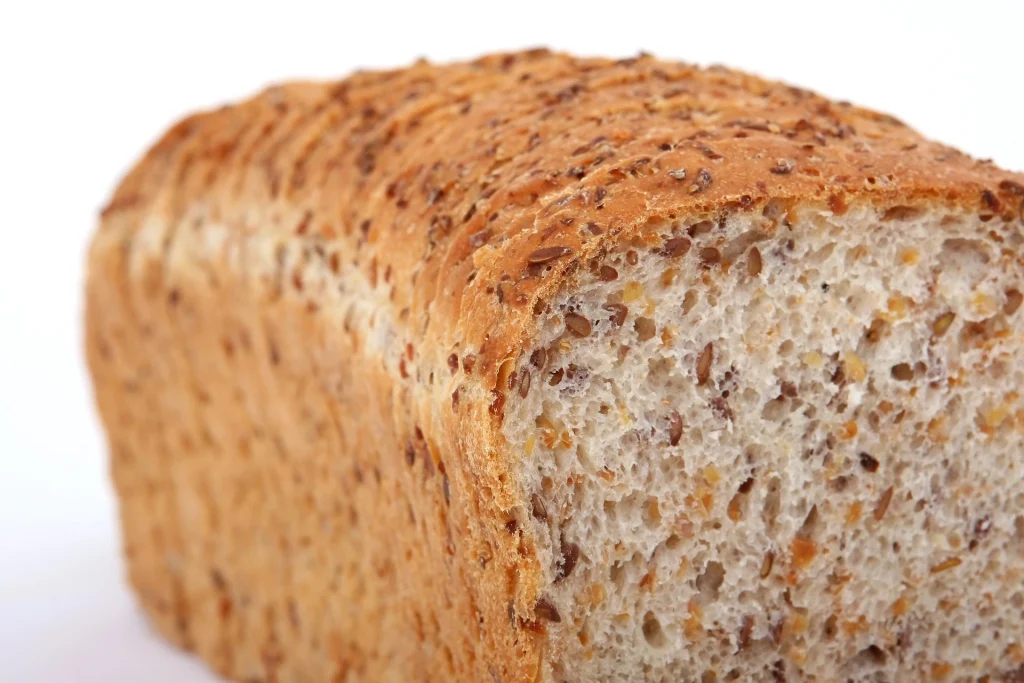
Since most high-volume foods are fruits and vegetables, it makes sense that these are also the most nutrient-dense foods.
It’s one thing to hit our macros and look a certain way.
However, if you aren’t feeling your best, you have low energy, digestive issues, and underlying health complications, then looking amazing is kind of like polishing a turd.
You can lift weights, have a six-pack, and be your absolute leanest with an incredible physique, but if internally you are not getting the nutrition you need, is it really worth it?
Alternatively, what if you could be healthy AND look amazing at the same time?
Win-win right?
This is why making sure we are getting plenty of fiber and nutrient density in our diet is crucial. It’s important to be prioritizing these foods, not just for satiety or weight loss, but for general health and well-being.
Volume Eating: How To Eat More And Weigh Less
How To Make Recipes Higher In Volume
There are quite a few ways to make recipes higher in volume, so I am going to give you real examples of recipes that I make frequently.
#1 Fried Rice
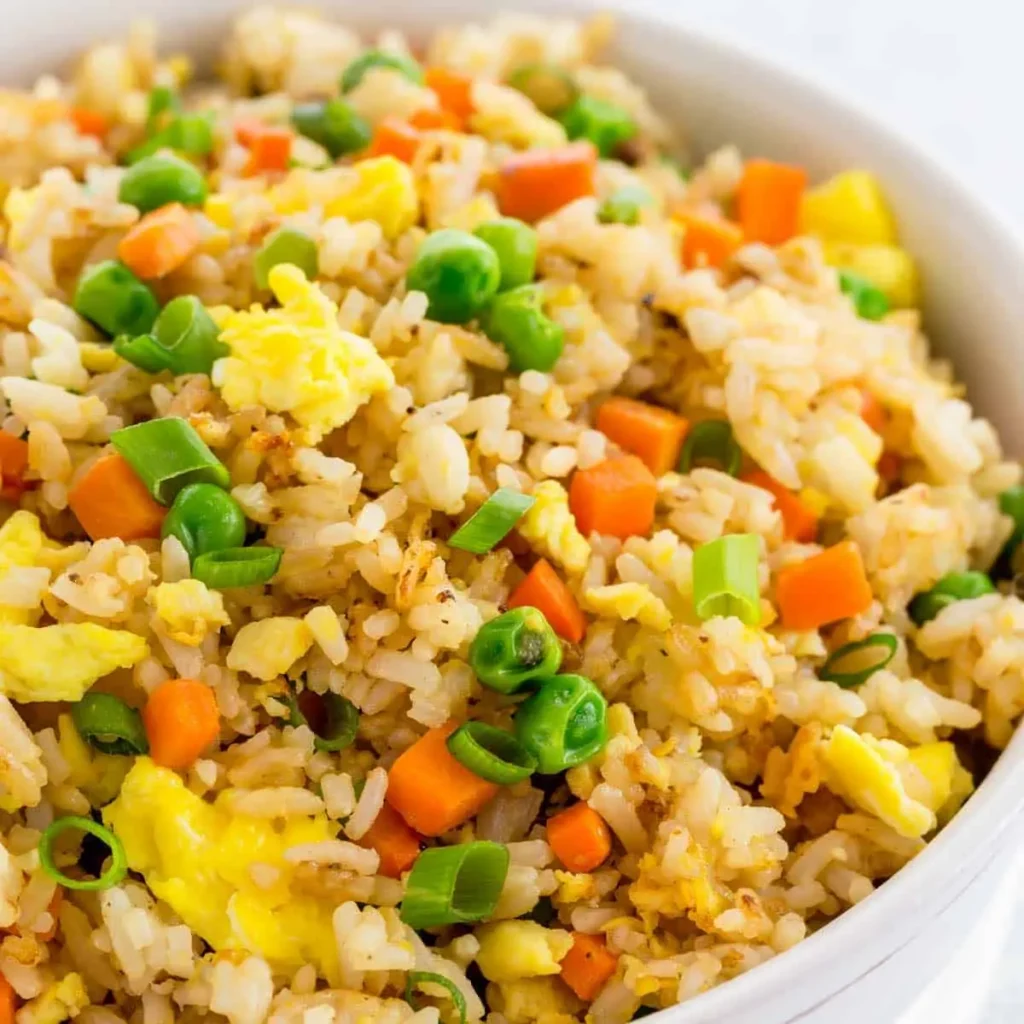
For this recipe, I like to use half rice and half cauliflower rice. I will add in some peas, broccoli, whatever veggies I have on hand to bulk it up. Throw it in a pan with the rice. Once the veggies are halfway cooked, I will create a hole in the middle of the pan and spray some cooking spray. I will then add 1 egg and some liquid egg whites. Once the eggs are cooked through, I will add 1 Tbsp of soy sauce and the dish is done.
#2 Veggie Frittata
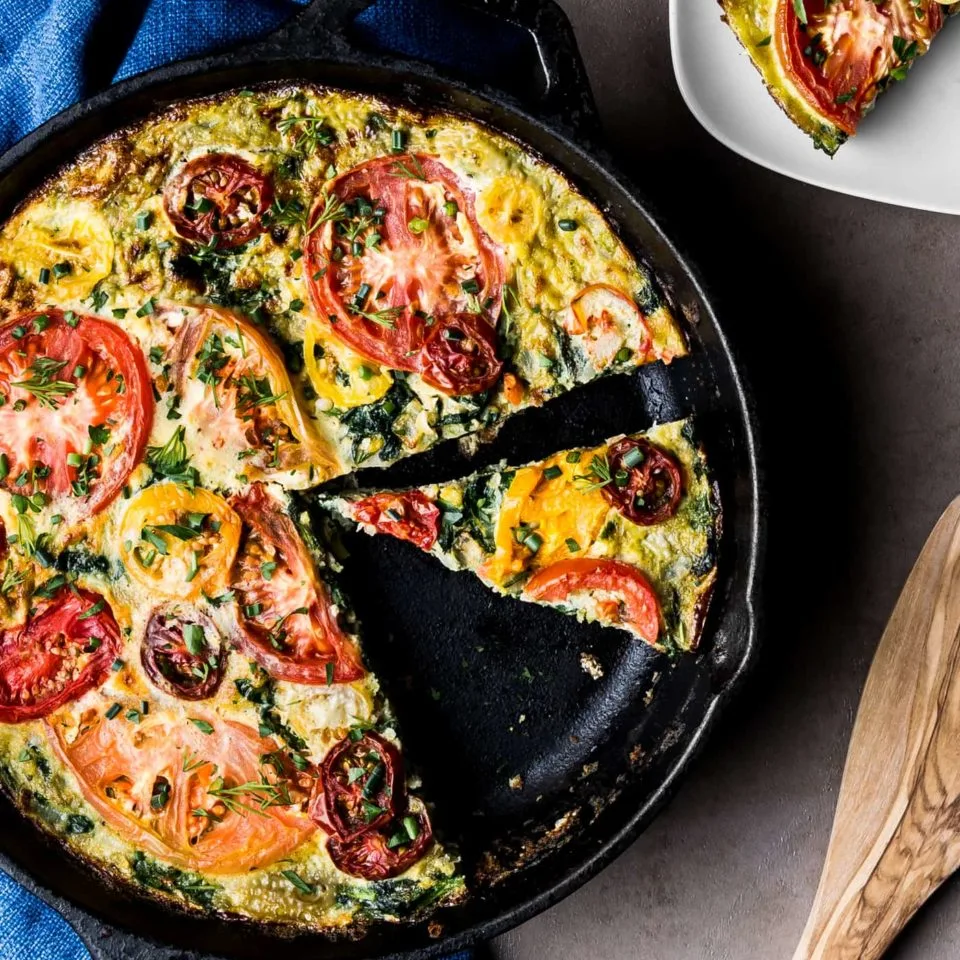
This is one of my favorites because it is so filling and high in protein. I take whatever veggies I have in the fridge, add 1 cup of liquid egg whites, 1 whole egg, some seasonings, and put it in the oven at 350 degrees f for about 20-30 minutes or until eggs are cooked through. You can top this with some greek yogurt, salsa, or toast on the side.
#3 Big Ass Salad
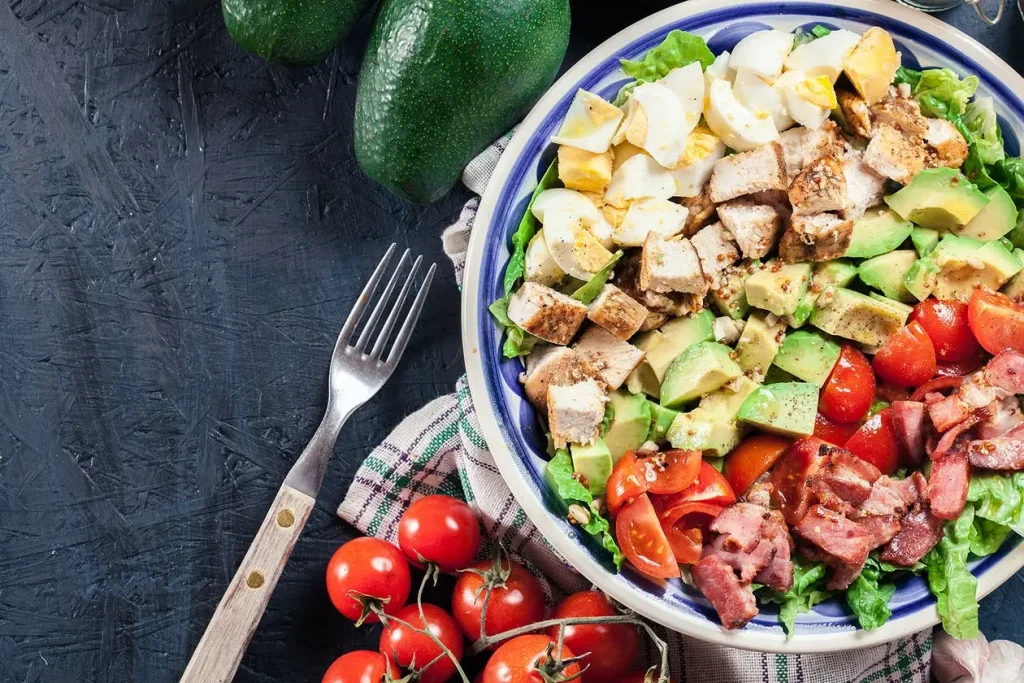
This is my staple. It doesn’t matter if it’s a bagged salad kit or one you make with all fresh ingredients. Make sure it’s big, and has lots of veggies protein. Obviously, depending on your calorie needs, be mindful of dressings and different toppings that you add like cheese and croutons. Don’t overthink it. The most important thing is to get in those micronutrients and fiber.
#4 Big Ass Pasta Bowl
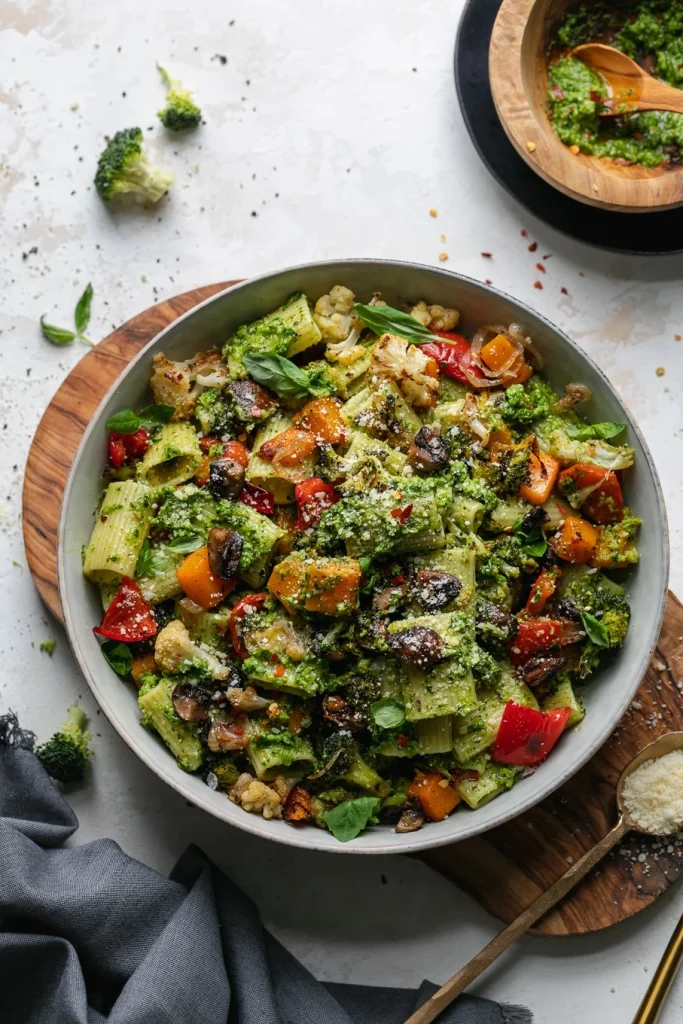
Being an Italian who loves pasta, I figured out a way to be able to enjoy huge bowls of pasta without all the added calories. I use a product called Palmini. This is pasta that is made from the hearts of palm. The cool thing is you can eat 12 oz of this stuff for around 60 calories. Insane right? Alternatively, you can also use Shirataki noodles, zucchini noodles, or spaghetti squash.
Make your pasta dish just as you normally do, add in lots of vegetables, and the Palmini noodles and you have just doubled the size of your pasta bowl while keeping calories in check.
#5 Teryaki Chicken Stir Fry
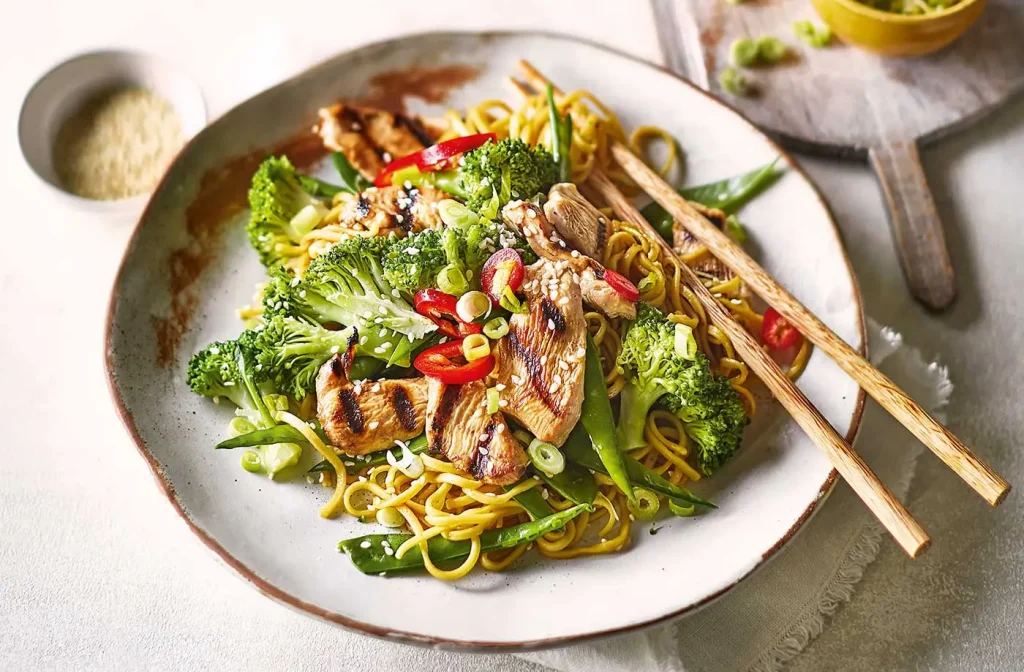
For this recipe, I will grill up some chicken breasts that have been marinated in low-calorie teriyaki sauce. I like this one. Then, I will add them to a bed of vegetables and shirataki noodles that I have sauteed in more sauce. Easy!
Volume Eating: How To Eat More And Weigh Less
9 Bonus Volume Eating Tips
- Serve your curries or stir fry over a bed of lettuce, cabbage, or cauliflower rice
- Add roasted vegetables to main courses with grains to increase the volume of the meal.
- Add berries, apples, or pears into your morning oatmeal with some greek yogurt.
- Make your own low-calorie dressings out of greek yogurt and ranch seasoning packets.
- Add veggies to burritos and tacos.
- Snack on popcorn instead of chips or nuts.
- Add a big salad to your plate with every meal.
- Use low-calorie condiments like salsa or mustard. I actually create a list of low-calorie sauces here.
- Use mostly egg whites with 1 or 2 eggs in your scrambles to bump up the protein and volume. Throw in some extra chopped veggies for even more volume.
Volume Eating: How To Eat More And Weigh Less
When is it not a good idea to eat high-volume?
Volume eating is just a strategy to be able to get more out of your nutrition for fewer calories.
Keep in mind, that plenty of low-volume foods has amazing health benefits as well.
Nuts, seeds, avocado, and fatty fish, for example, are all very nutrient-dense and should still be included in moderation.
If you are someone who has a hard time gaining weight, then opting for more calorie-dense foods may be a better idea.
Keep in mind as well, that just because volume eating is great for losing weight and improving your nutrition doesn’t mean you have to do it all the time.
You should still be including foods you love that aren’t high-volume on a consistent basis to help you adhere to your nutrition plan.
Conclusion
Volume eating is an amazing way of eating that allows you to eat more food for fewer calories.
It’s an amazing tool for weight loss and improving the overall quality of your nutrition.
For more info on specific foods and products I recommend, you might like this article here.
If you need more help with your nutrition and training and want me to take the guesswork out of your weight loss journey, you can apply for 1-1 online coaching here:

